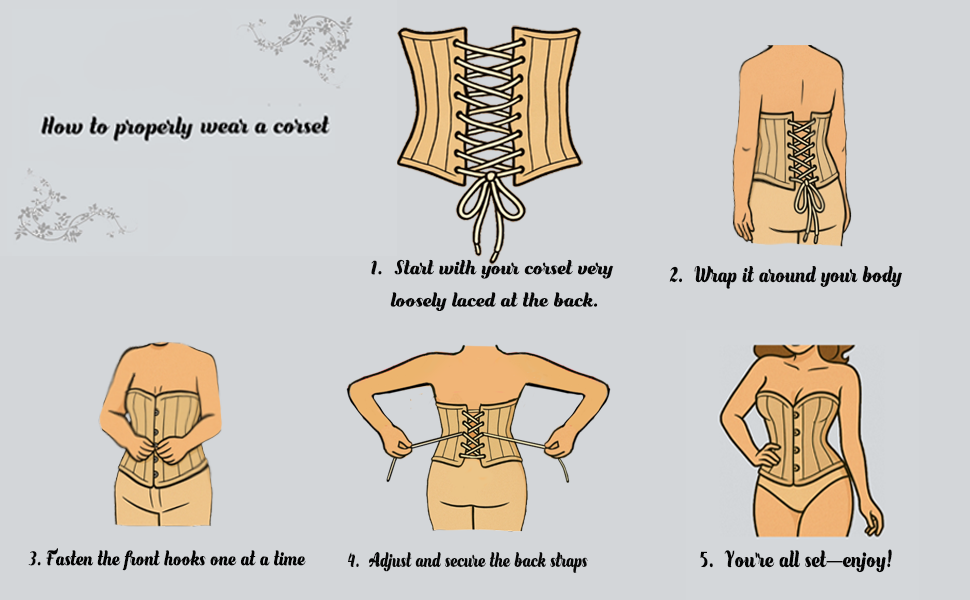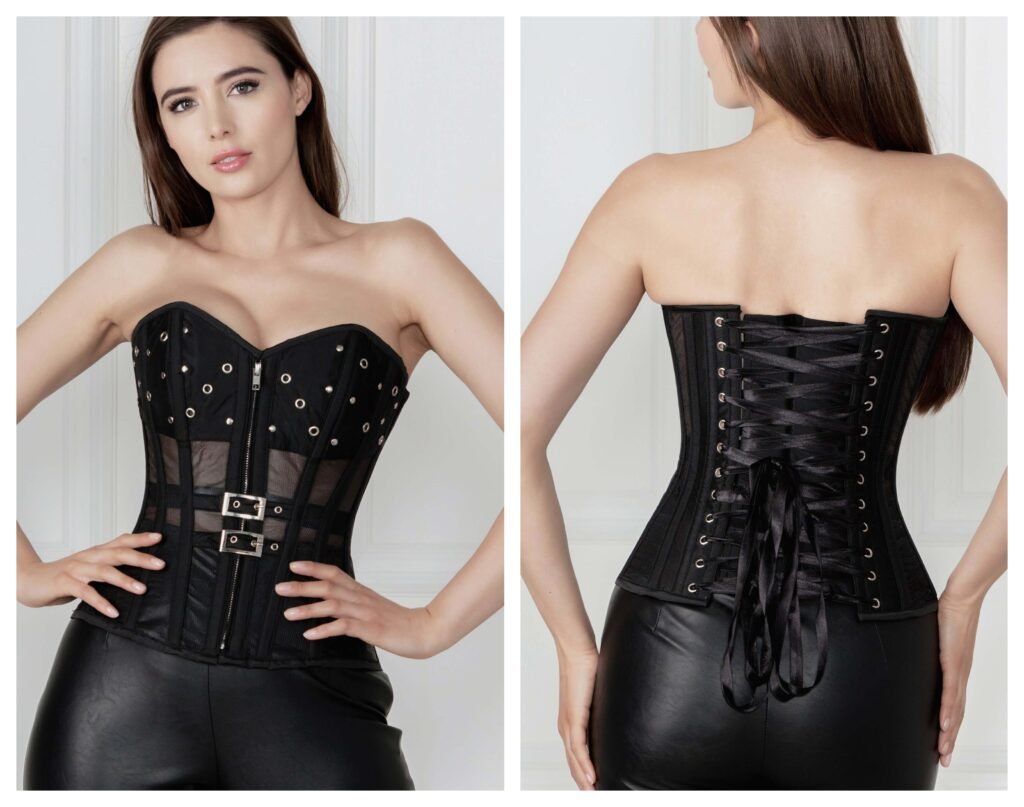How to Tight Lace Safely with a Steel Boned Corset

Tight-lacing is a classic art that has been around for centuries. It’s all about shaping your waistline and creating that dreamy hourglass figure. But, as with any practice involving your body, doing it safely is the key. If you’re planning to tight-lace, a steel boned corset is your best friend. Unlike cheap plastic boned garments, steel bones provide real strength and support for waist training without warping or breaking. Ever think about sleep in corset? Can You Sleep in a Steel Boned Corset? Expert Advice. This guide covers everything you need to know—from choosing the right corset to lacing techniques and maintenance tips.
Why Choose a Steel Boned Corset for Tight-Lacing?
The first thing you need for safe tight-lacing is the right garment. A steel boned corset is designed with strong steel bones and durable fabric to give you the structure you need. Plastic boned corsets or fashion corsets are not suitable for tight-lacing. They bend, snap, and can even cause injuries. An vintage overbust steel boned corset top usually has flat steel bones for front and back support and spiral steel bones on the sides for flexibility and comfort. If you’re going for dramatic waist reduction, opt for a heavy duty steel corset made with multiple layers of fabric and a waist tape inside. This ensures the corset won’t stretch out over time. If you love full coverage, a steel boned overbust corset is a great option. It supports the bust while shaping your waist, making it perfect for those who want both function and fashion. For those who prefer more mobility, an underbust corset works just as well. The key is quality—never compromise on that.
How Tight Should a Corset Be?
One of the biggest mistakes beginners make is lacing too tight, too soon. Your corset should feel snug, but not painful. You should be able to breathe comfortably and move around without sharp discomfort. Tight-lacing is a gradual process. Start with a genuine steel boned corset and tighten the laces just enough to feel supported, not squeezed. Most waist trainers and corsets allow for a reduction of 2–4 inches initially. If you plan on going smaller, do it over time. Your body needs to adjust. Trying to shrink your waist by 6 inches in one day is a recipe for bruising, soreness, or even damage to your ribs. Patience is the secret to safe tight-lacing.
Steps for Lace Safely with a Steel Boned Corset
1. Break in Your Corset: Never wear a new corset for a full day right away. Break it in slowly over a week or two. Start with 1–2 hours a day and gradually increase the time. This allows the fabric and steel bones to mold to your body without stress.
2. Lace Evenly: When you lace up, make sure the tension is even on both sides. Pull the laces from the middle (the bunny loops) rather than from the top or bottom. Uneven lacing can strain the fabric and hurt your back.
3. Listen to Your Body: If you feel sharp pain, numbness, or difficulty breathing, loosen your corset immediately. A steel boned overbust corset or underbust corset should feel secure, not suffocating.
4. Tighten Gradually: Increase your waist reduction slowly. After a few days of comfortable wear, you can tighten the laces slightly. The goal is progress, not speed.
5. Avoid Over-Tightening: You might be tempted to achieve that perfect hourglass figure in one go, but your organs and ribs need time to adjust. Over-tightening can lead to bruising, acid reflux, or worse.

Choosing the Right Steel Boned Corset
Not all corsets are created equal. If you want to tight-lace safely, invest in a genuine steel bone corset with these features: strong steel bones with at least 20 bones for full support (flat steels in front and back, spiral steels on the sides), durable fabric with three-layer construction and cotton lining for breathability, a waist tape to prevent stretching over time, a quality busk closure in the front, and sturdy lacing at the back to handle tension. If you plan on wearing your corset daily, go for a heavy duty steel boned corset. For beginners, an underbust style is easier to start with. For advanced users or for special occasions, a steel boned overbust corset adds elegance and extra bust support.
Daily Care and Maintenance Tips
A well-made corset can last years if you care for it properly. After each wear, loosen the laces completely before removing it. Never yank it off while tight—it can damage the steel bones and fabric. Store your corset flat or hang it to keep its shape. Avoid washing it in water. Instead, spot-clean and air dry to maintain the integrity of the steel and fabric.
How Long Can You Wear a Corset?
If you’re a beginner, limit your wear to 2–3 hours a day. Over time, as your body adjusts and your corset breaks in, you can increase it to 6–8 hours. Some experienced tight-lacers wear their corset all day, but this should only be done after months of training. Always take breaks and give your body time to relax.


Myths About Tight-Lacing
There are many myths about corsets being harmful. The truth is, if done correctly with a steel boned corset, tight-lacing is safe. Victorian women wore corsets daily for years without major issues. Problems occur only when people rush the process or wear poor-quality corsets. Always choose a genuine steel boned corset, tighten gradually, and listen to your body.
Final Thoughts
Tight-lacing is an elegant art that requires patience, the right garment, and care. With a steel boned corset, you can safely achieve that classic hourglass shape without compromising your health. Choose a heavy duty steel boned corset for durability, lace it evenly, and always take your time. Remember, the goal is beauty with comfort—not pain.













